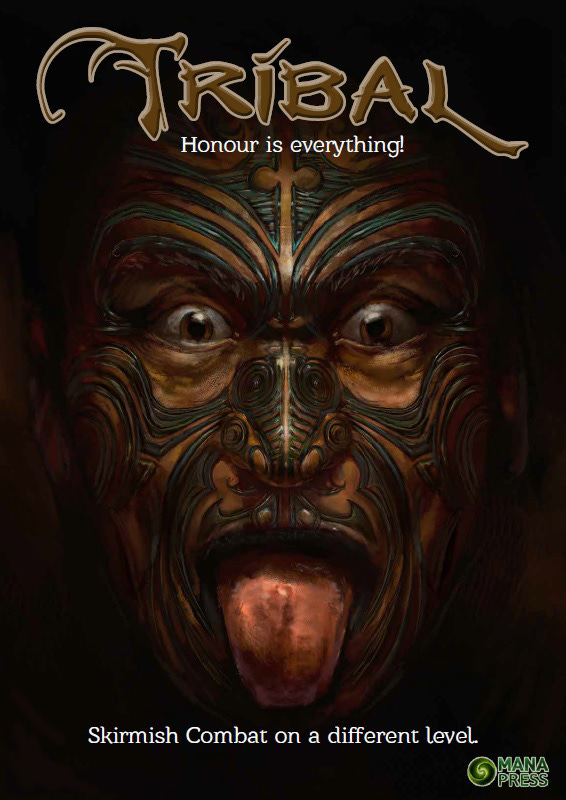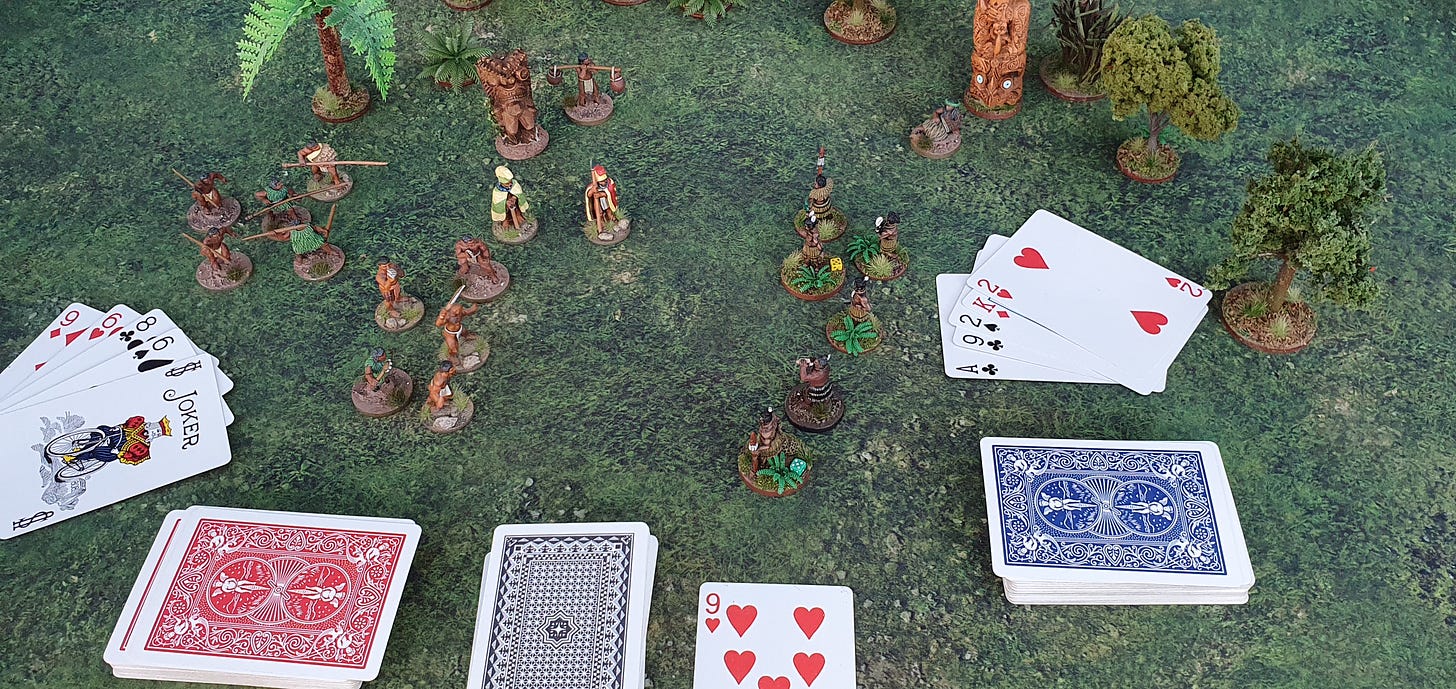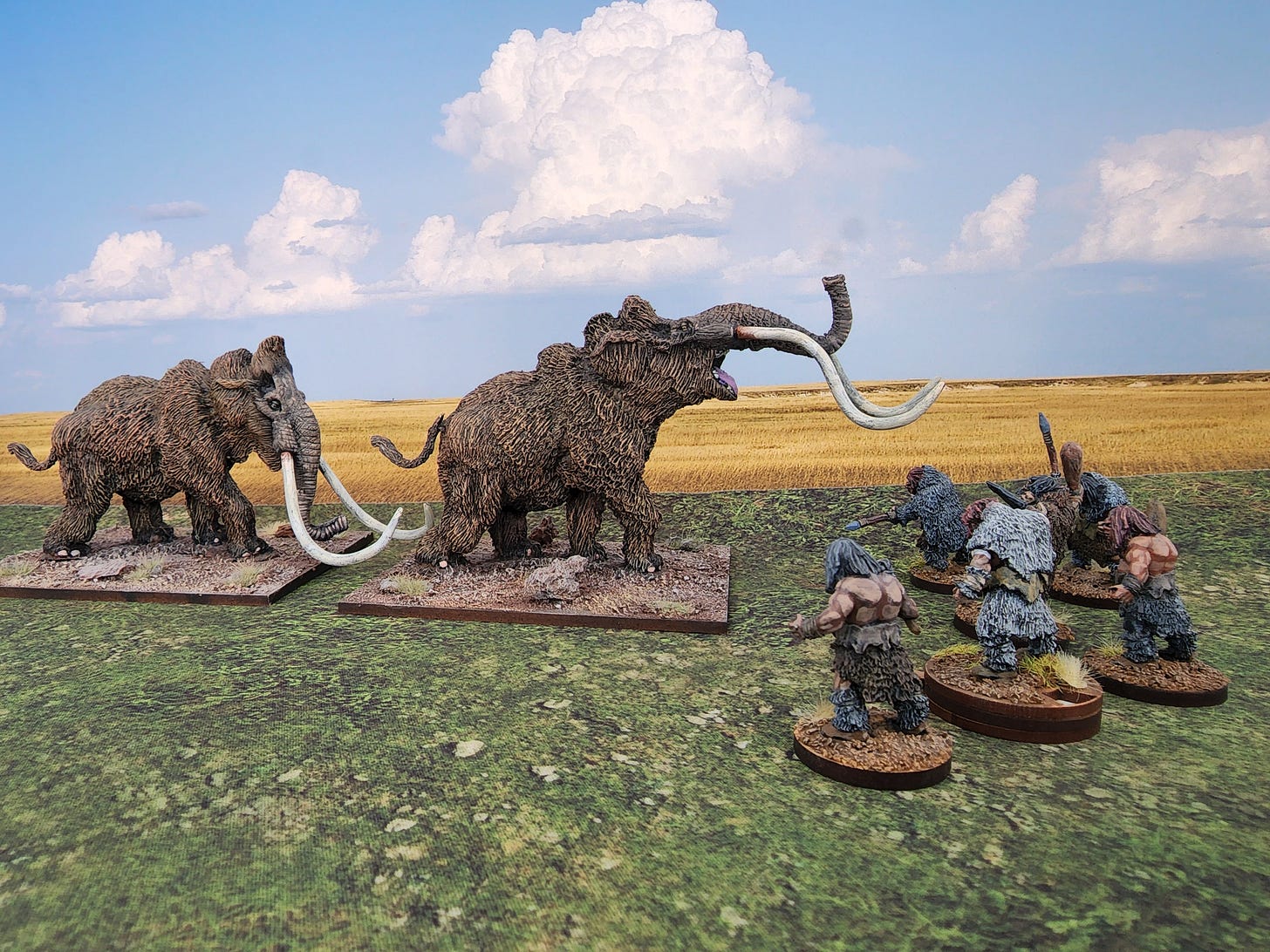Mana Press run a humble publishing company in Melbourne where they produce and distribute various tabletop miniatures games – empowered by a unique blend of history, culture and wisdom.
What is so fascinating about their work is how deep their design philosophy is. There is so much to unpack, so much to learn.
Aramiha Harwood of Mana Press kindly agreed to introduce himself and answer a few questions to demystify their intriguing portfolio including TRIBAL, Maximillian 1934 and BRUTAL as well as share several updates on projects in development.
Q: Please introduce yourself and the team?
A: Kia Ora koutou (greetings all) my name is Aramiha Harwood. I’m Maori in origin but grew up in country Victoria when I was just a little kid. My iwi/tribe is Nga Puhi which is the northern Tribe of Aotearoa/New Zealand. Coming from a small country town I had a really tight group of geeky friends who played lots of D&D and MERP and DC Heroes and Call of Cthulhu and so on. We also started to play some wargames – BattleTech, War of the Ring, Chainmail. This progressed into the early editions of Rogue Trader and Warhammer.
Lon Teal is our main game rules writer, designer and mechanic. He also hails from NZ,around about Wairarapa bush which is kind of in the middle of the North Island. He has been playing board games, RPGs and wargames for close to 50 years. He is a rules wiz and knows his way around the diverse array of different game mechanics from his 50 years of playing. He is also an awesome painter and we try to use as much photos of his painted figures in our rulebooks as possible.
Adam Gehling hails from Adelaide, South Australia. He grew up playing Warhammer and 40K in the The Military Hobbies store basement when it was in Port Adelaide. He plays lots of different wargames while also doing some amazing cosplay in the Melbourne chapter of the 501st Legion (Darth Vader, Stormtrooper, Admiral Ackbar). Adam is a senior science teacher in a school north of Melbourne and he brings extensive knowledge alongside a healthy scepticism to the ‘serious’ elements of our games.
Together, we typically play huge historical wargames – mainly using Hail Caesar rules. We cover ECW, Peloponnesian Hoplites, WotRoses, Early Imperial Rome and its celt/gallic/Briton enemies and Bronze Age. We also like our skirmish level games – playing big campaigns of Mordheim, Necromunda, Legends of the Old West, Rangers of Shadow Deep and Forbidden Psalm.
Q: What can you tell us about Mana Press?
A: Mana Press is a vehicle for us to publish the games that interest us. For myself, I wanted to publish TRIBAL as a means of sharing elements of Maori approaches to warfare, tikanga (protocols) and matauranga (world view). Lon and Adam revel in creating/brainstorming new rules for games – usually while we are playing other games! It’s all part of the enjoyment of what we do.
We tend to come up with games that we like playing and just want to share that. In turn, we like to go to wargaming conventions to play with other people, share our games and to see what other people are playing. Mana Press is a vehicle for us to do this!
Long term, our approach is keeping Mana Press as a sustainable proposition – trying to ensure that we do a good job of making good games, make enough money for Mana Press to pay for itself and associated costs but not wanting to feel pressured to make major dollars. It’s a bit of Maori thing, perhaps. 😉
Q: TRIBAL is a skirmish combat game set in a pre-gunpowder and clan setting. Honour is the narrative focus and in addition to using miniatures a deck of cards is also used to play. Please tell us more?
A: So TRIBAL started as an idea to create rules that would work with Nic Robson’s Eureka range of Maori.
Lon came up with the idea of exchanging blows (and defending against them) through cards. I argued that we needed to change the narrative of the wargame – from one of ‘conquer everything before you and hear the lamentation of the women to ‘how would you want to be remembered for what was done in the battle?’ This is a very Maori approach to warfare, associated as it is with oral traditions of honouring those in battle.
Mana is the means of measuring this. Mana is a complex concept – it’s kinda like honour, reputation, social standing, social cache, spirituality and magic all rolled into one. I’d argue there are are similiarities with other cultures:
Drengksapr for Vikings.
Kleos for Hellenic Heroes of Homer’s epics.
Face for Asian cultures.
Coup for First nations Plains Tribes.
Giri/Haji (duty/shame) for Japanese culture.
In terms of using cards to play the game, I can understand peoples’ resistance to this idea. I was VERY negative about the idea of using cards – they just don’t work for me. BUT, I found after my first game of TRIBAL that cards are a much better way of representing hand-to-hand combat. Plus, you’re always involved in the game rather than doing nothing as your opponent takes their turn. As time goes by, you can actually get quite skillful at playing the game too!
Q: How does the 'PRIMEVAL' supplement expand the TRIBAL experience?
A: PRIMEVAL I would argue was driven by Adam. He has extensive experience working as a palaeontologist and knows a LOT about the science/anthropology of prehistoric era animals, cultures and warfare.
Lon And Adam came up with the idea of having different ‘behaviours’ from animals, which are hunted extensively by the different TRIBAL factions in the game. These behaviours could range from herd type animals which would sprint from hunters when in close proximity, to larger animals such as mammoths which could react to defend themselves when threatened, to dangerous stalking animals which could hide and pounce on unfortunate members of a hunting party.
These rules were incorporated into the idea of a Hunt – which would incorporate a set of different phases rather than just one scenario like tracking, stalking, attacking and returning with the catch.
Q: For anyone interested in giving TRIBAL a go what would you recommend?
A: I’d actually recommend adopting the Mana Press crew’s attitude and using whatever you like from the game/s to play your own games! Start with the base TRIBAL rules; you can even use first edition rules.
I will always argue that our games are a toolbox – take what you want from it and fit it into your interests. Homeric combat on chariots, mythical creatures fighting each other on clouds, superheroes battling it out on a city street, fighting off zombies in a post-apocalyptic shopping mall – a bit of imagination and fun can go a long way!
Q: Meanwhile, Maximillian 1934 is a pulp action racing game set in a Dirty Thirties dystopia. What inspired this road rage ruleset?
A: Max34 kind of comes from our general interest in Back of Beyond gaming – central-Asian setting with Chinese warlords, white Russian nobles, English agents, Mongolian princesses and so on. We like PULP! Max34 is an opportunity to build pulp-era cars, with the help of Eureka bits and pieces, and make roaring sounds as we race our cars around a table.
Q: Can you share some detail about the gameplay mechanics in Maximillian 1934 like attempting dangerous manoeuvres at top speed?
A: So making a manoeuvre gets more dangerous the faster you go and the tighter the turn you want to make. Growing up in the country, like Lon and myself did, you invariably had the opportunity to go to a mate’s house and go out on a paddock with an old banger car and just roar around in it.
You’d gradually work out that if you could go fast enough and turned really tight, you’d lose control and spin out of control – which is what happens in Max34. If you really lose control, your car starts to go up in the air on one side, and you’re barely hanging on from letting the car go into a roll. If you did go into a roll, it was everybody out and you’d try to roll the car back onto its wheels. Great Fun! (but don’t try this at home, kids).
Q: BRUTAL looks like a more modern take on TRIBAL. Is that a fair comparison? What kind of warbands would you typically see in BRUTAL?
A: It is relatively modern in that we tried to examine the impact of urbanised living on creating gangs – it’s about gang warfare! From late Republican Rome political gangs to Byzantine chariot-racing supporters fighting each other to the War of the Fists (fascinating renaissance period gangs fighting in Venice and then in Rome and Florence) to Victorian period gangs in Britain, New York and Australia (research The Crutchy Push some time).
We wanted to move into 70s/80s football hooliganism but felt that some elements of National Front politics made things a bit … uncomfortable for us.
That, plus we had some friends/family involved in the Hillsborough disaster and felt it wasn’t appropriate on a personal level. But, if people would like to try football hooligan fights, go for it! Like I said above, the tools are there for people to make their own.
Q: Can you share any breaking news or comment on any products in development?
A: At the moment I have been working with Craig Woodfield (Ronin writer) and Dean Motoyama on a TRIBAL set of rules for a Japanese setting called Zanshin. While set in the sengoku jidai, edo and meiji restoration periods, I’m trying to move away from formal military combats.
There was a LOT of conflict happening in the urbanising centres of Japan over this time between pirates, bandits, vigilante gangs, political agitators and protection rackets. Rather than being a supplement to the TRIBAL rules, like the others, Zanshin will be a standalone set of rules (rewriting/updating some elements of the TRIBAL mechanics). There will also be elements of magic and spirituality – including yokai spirits, demons and oni ogres.
Lon is working on a set of late 19th century naval rules – kind of dreadnought tactics in a steampunk setting. We all have an extensive collection of Dystopian Wars fleets, but we’re not huge fans of the most recent version of the rules. Basically, we want to make rules that we can playtest using our Dystopian Wars fleets.
Be sure to follow Mana Press on Facebook, Instagram and YouTube.














